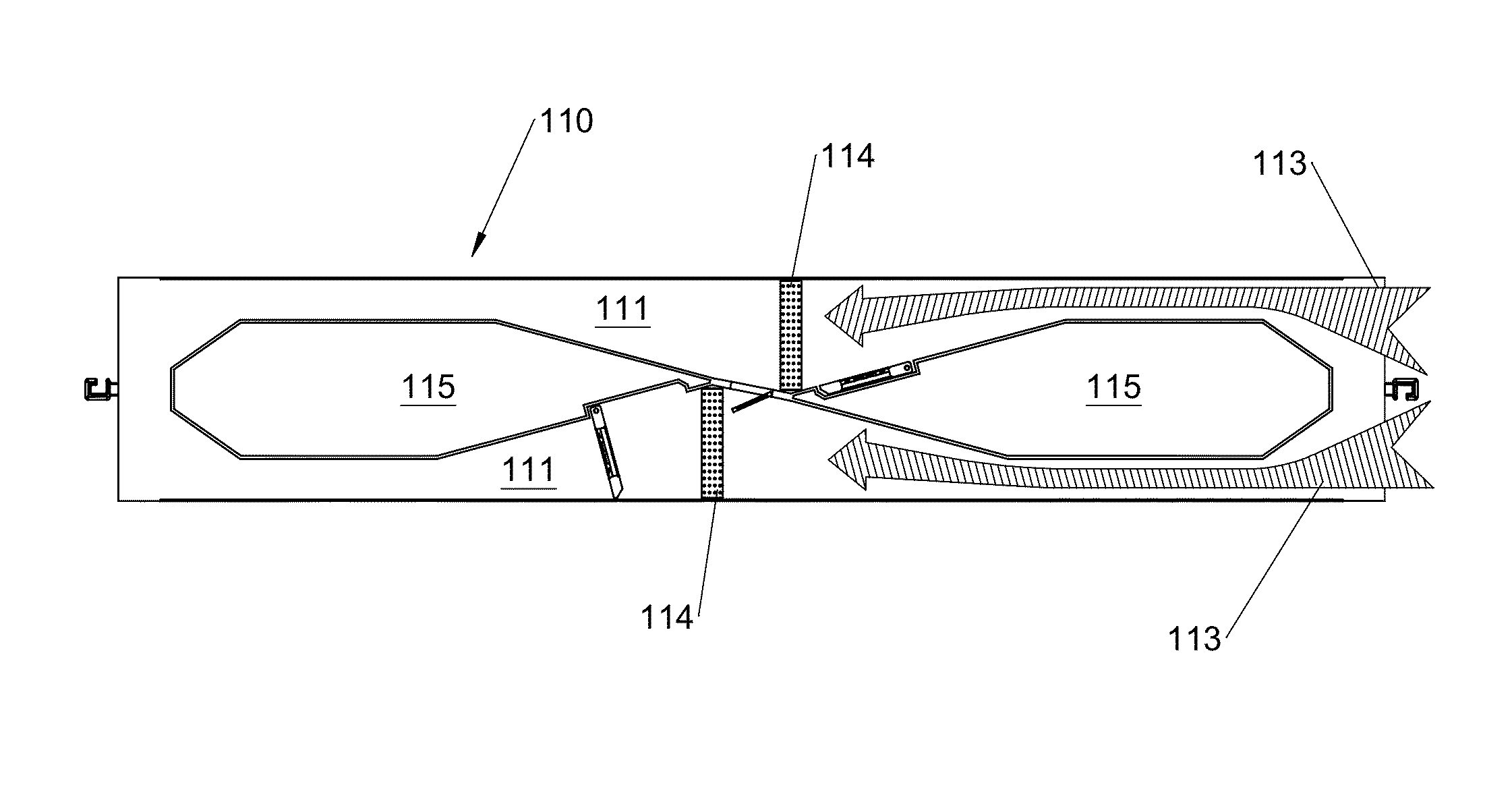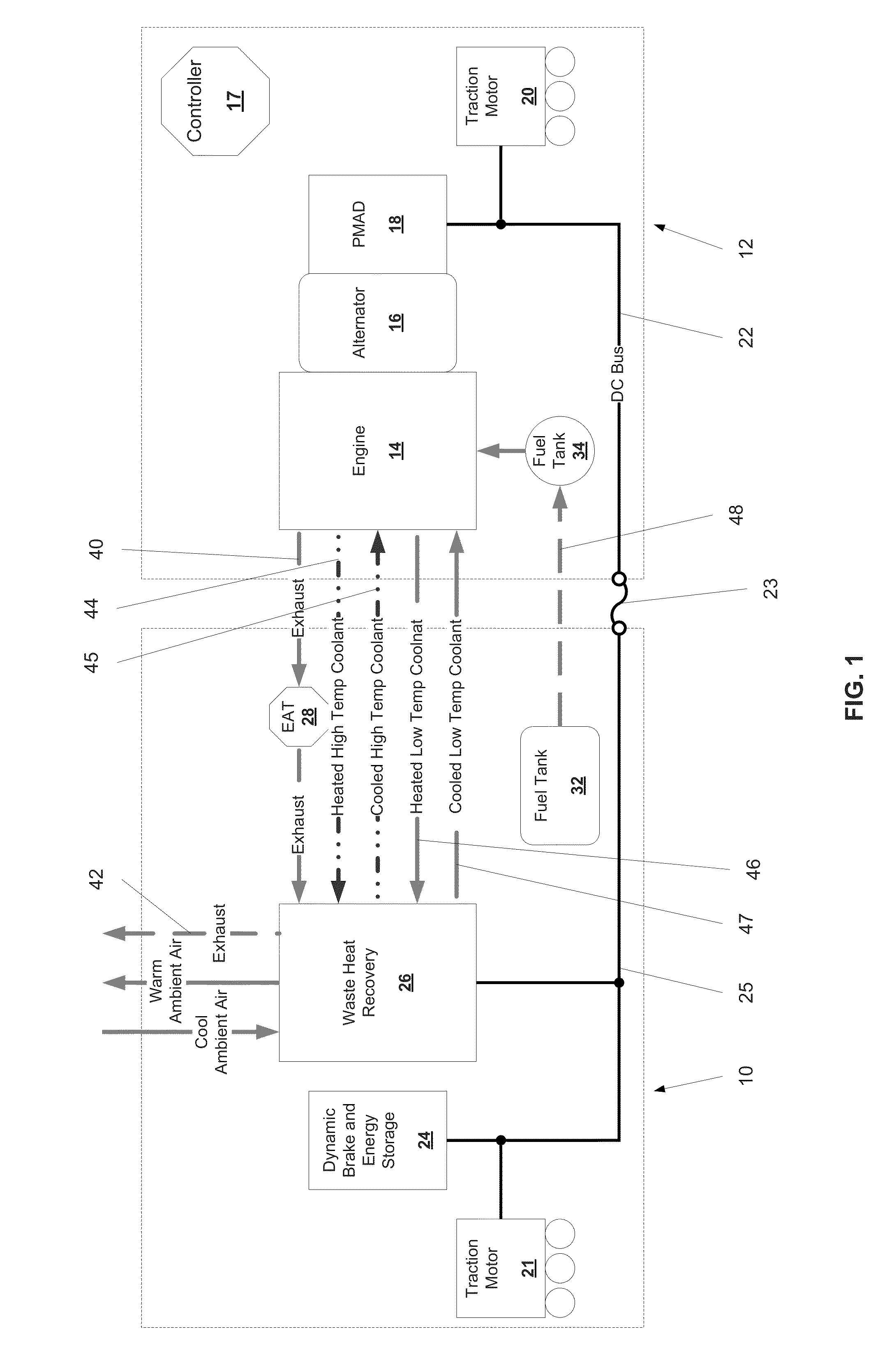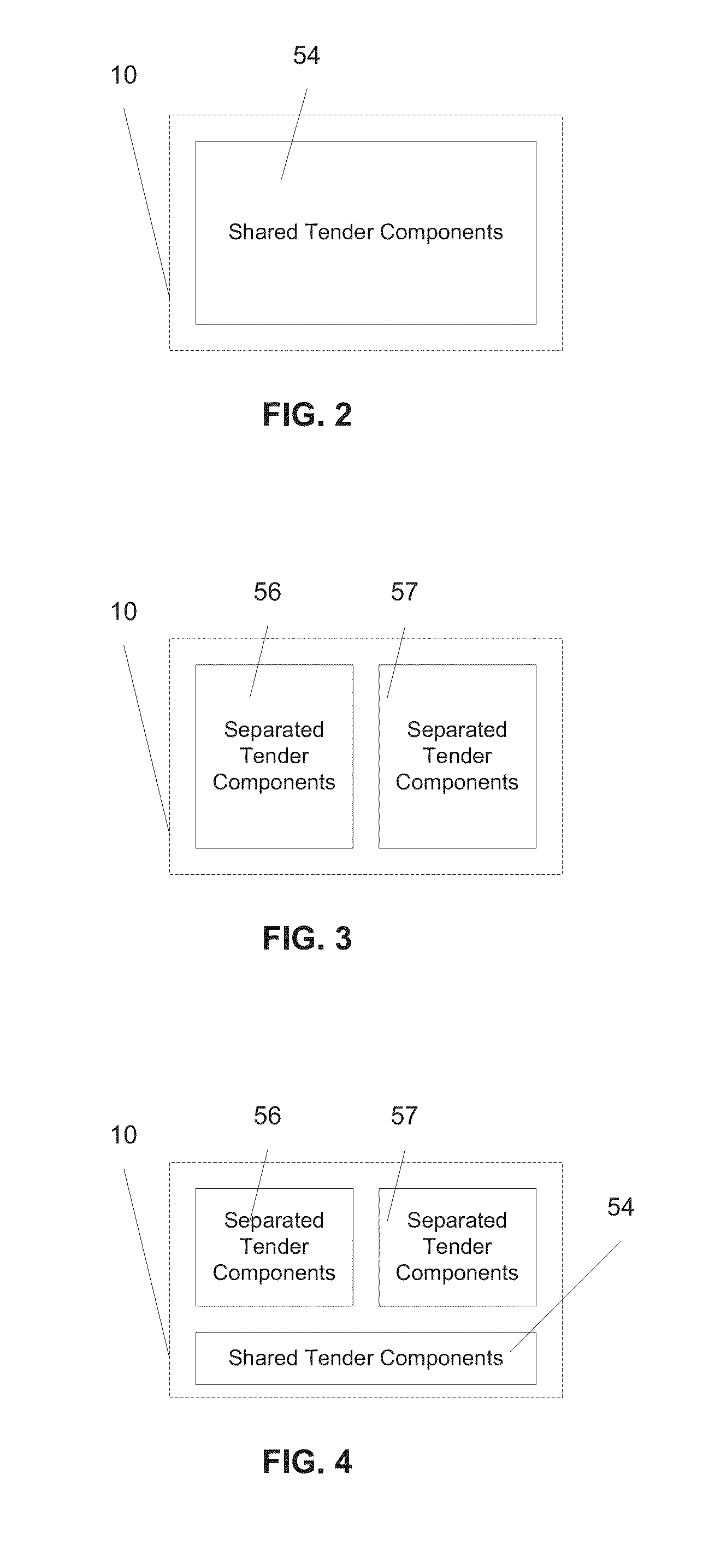Mobile diesel power system with separated engine and exhaust
a diesel power system and engine technology, applied in the field of locomotives, can solve the problems of high-cost diesel fuel, inability of railroads and locomotive manufacturers to manage, and financial challenges of the us railroad industry, so as to reduce fuel consumption, improve power, and ease the space constraints of the locomotiv
- Summary
- Abstract
- Description
- Claims
- Application Information
AI Technical Summary
Benefits of technology
Problems solved by technology
Method used
Image
Examples
Embodiment Construction
[0030]To facilitate an understanding of the present disclosure, a number of terms and phrases are defined below:
[0031]Alternator: An electromechanical device used to convert mechanical power to alternating current electrical power. In the context of this disclosure, the term alternator can apply to actual alternators, generators, or any other electromechanical device typically used to convert mechanical power into electrical power.
[0032]Dimethyl ether (DME): DME is an organic compound with the formula CH3OCH3. The simplest ether, it is a colorless gas that is a useful precursor to other organic compounds and an aerosol propellant. It has similar storage characteristics as propane (LPG) except it is a liquid at lower pressures and therefore can use a thinner and lighter pressure vessel. Dimethyl ether is also promising as a clean-burning hydrocarbon fuel. DME is an especially promising fuel in diesel engines, owing to its high cetane number, 55, which is greater than that of diesel, ...
PUM
 Login to View More
Login to View More Abstract
Description
Claims
Application Information
 Login to View More
Login to View More - R&D
- Intellectual Property
- Life Sciences
- Materials
- Tech Scout
- Unparalleled Data Quality
- Higher Quality Content
- 60% Fewer Hallucinations
Browse by: Latest US Patents, China's latest patents, Technical Efficacy Thesaurus, Application Domain, Technology Topic, Popular Technical Reports.
© 2025 PatSnap. All rights reserved.Legal|Privacy policy|Modern Slavery Act Transparency Statement|Sitemap|About US| Contact US: help@patsnap.com



